
When you have hundreds or even thousands of alarm messages to add to your FactoryTalk View Machine Edition (View ME) project, this little trick can be really helpful.
To start, enter a few alarm messages of each type you’ll need into the View ME Alarm Setup Message Editor to act as your template. Then click on the top left hand corner of the alarm messages table to select the entire table:
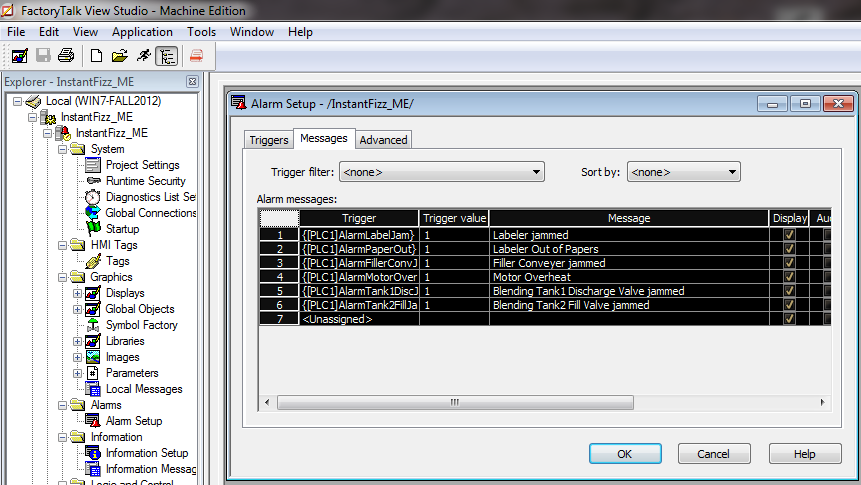 Now right click on row one of the table and select copy:
Now right click on row one of the table and select copy:
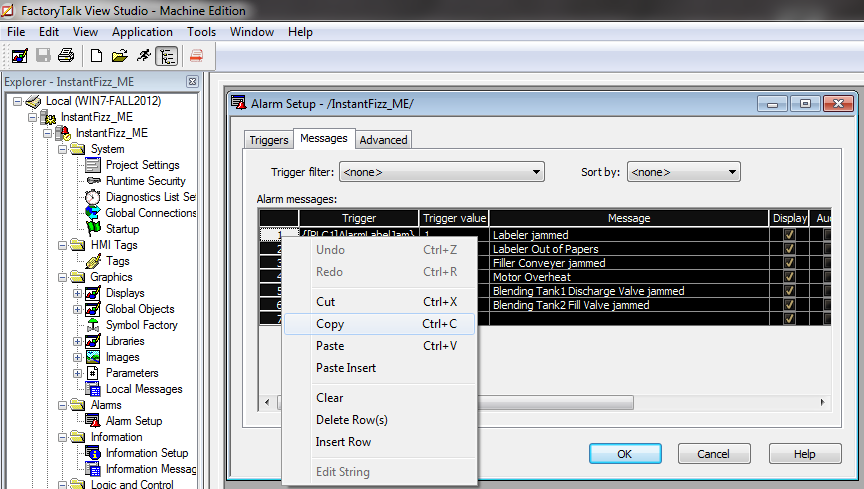
Next, open MS Excel and a worksheet. Then right click on cell A1 and select Paste.
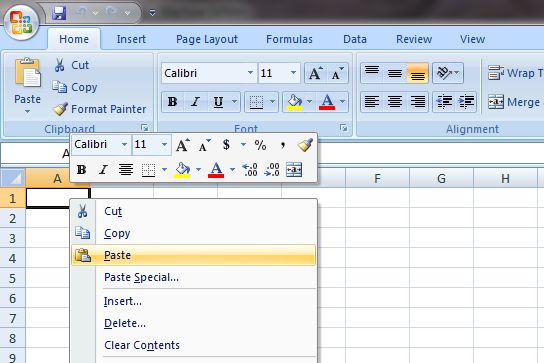
Delete the row, and then edit, copy, or duplicate your alarm message rows to create as many new alarm messages of each type as you need. Note: If you add new Triggers you’ll need to manually create those in FactoryTalk View Machine Edition.
When you’re ready to bring the new messages back into View ME, select and copy them (right click and select copy, or use the home menu – copy option)
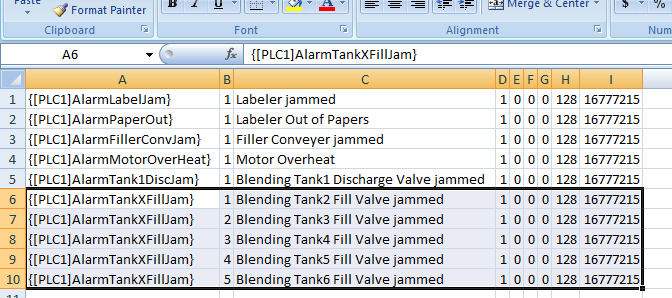 Now back in View ME’s Alarm Setup Message Editor, right click on the unassigned row and select paste:
Now back in View ME’s Alarm Setup Message Editor, right click on the unassigned row and select paste:
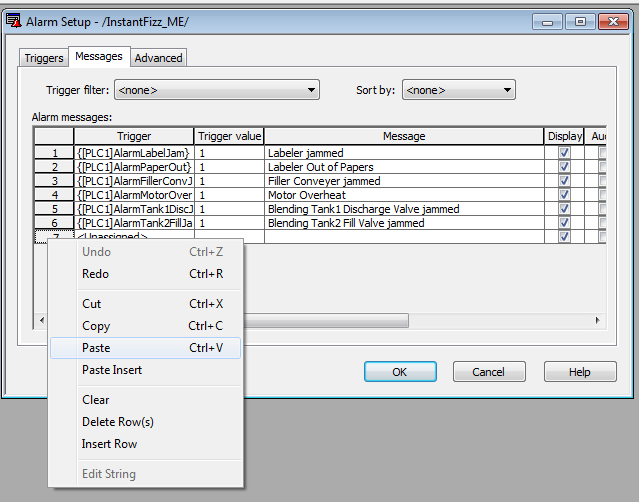
At this point you’ll see your new alarms in View ME’s Alarm Setup Message Editor, and after creating any new Alarm Triggers you may need you’ll want to press OK to save your work.
Hopefully you’ll find this simple little trick of using MS Excel to edit and create large numbers of Alarm Messages for View ME is helpful. If you have any experience with this means of creating alarm messages, or use the XML import/export feature, we’ve really like to hear from you by way of the ““post a comment or question” link below.
Until next time, Peace ✌️
If you enjoyed this content, please give it a Like, and consider Sharing a link to it as that is the best way for us to grow our audience, which in turn allows us to produce more content 🙂
Shawn M Tierney
Technology Enthusiast & Content Creator
Support our work and gain access to hundreds members only articles and videos by becoming a member at The Automation Blog or on YouTube. You’ll also find all of my affordable PLC, HMI, and SCADA courses at TheAutomationSchool.com.
- FactoryTalk Design Workbench First Look, CCW Comparison - December 19, 2025
- Drew Allen of Grace Technologies on Automation, Safety, and More (P256) - December 17, 2025
- Robotics in Warehouse Automation with Erik Nieves of Plus One Robotics (P255) - December 10, 2025

Discover more from The Automation Blog
Subscribe to get the latest posts sent to your email.


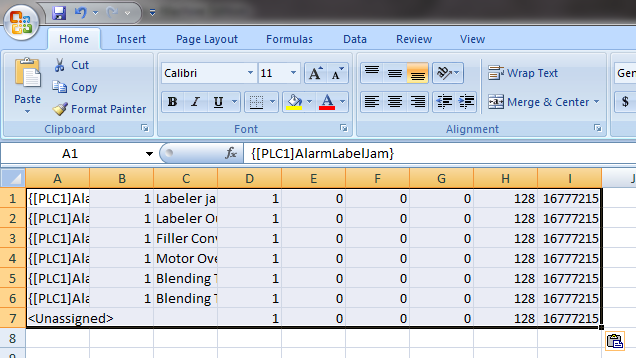
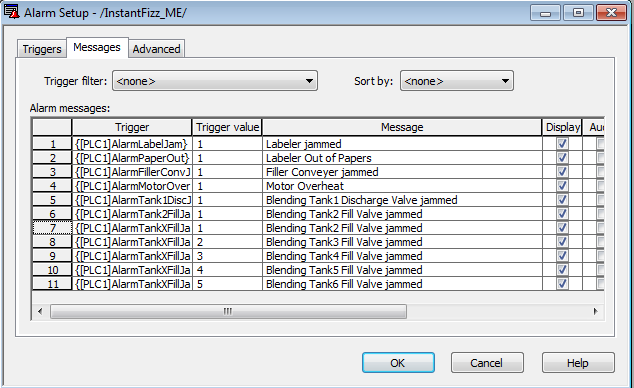



With Excel, it is very easy to autofill the numbers for pointers and such. This method works great with the Local Messages also.
The main problem with this method is that the paste is limited to 256 characters. If the alarm messages are to have more information that details when an alarm was triggered, what phase and so on, it can easily use up this limit.
It is interesting that the message itself can be edited directly and is not limited to 256, but when the paste function is applied, the message is truncated.
Cheers!
Good point Dadadadeo!
Shawn Tierney
Greeting sir,
Is there any option available for storing these alarm history in memory card of HMI and PLC?
Good afternoon hema,
Unlike the Datalog and Diagnostics, I don’t see anywhere in the Alarm Setup where you can change the stored file path.
However, if you upload the project I believe it does also grab the current alarm log file.
Conceivably, you could also use an autorun.bat file on a USB memory stick to copy the alarm file to it when you plug it into the PVPlus, but I haven’t tried that myself.
You could also conceivably setup the ftp or file server on the PVPlus CE or PVPlus 6 to expose the folder with the alarm file in it to the network so you could copy it that way, but again I haven’t done that myself.
Hope this helps,
Shawn Tierney
[…] NOTE: The newest version of this article is located HERE […]
I second the XML editing in Notepad++. The rectangular copy and paste is the feature that really sells it for me — if you select an fixed font (say, Courier) so that all your text columns line up, holding the ALT key down while selecting with the mouse puts you in rectangular mode — very much like editing in a spreadsheet… reminds me of the good old days.
Thanks for the tip!
Shawn Tierney
The XML Import/Export is really easy to use, especially if you have Notepad++. This works really well if you have similar tag names (or know your tag names) because you can just copy and past the XML entries and change the tag, ack tag, etc.
Thanks Patrick! I’m a big fan of Notepad++, and love it’s ability to search and replace text in an entire directory of files. Awesome little utility!